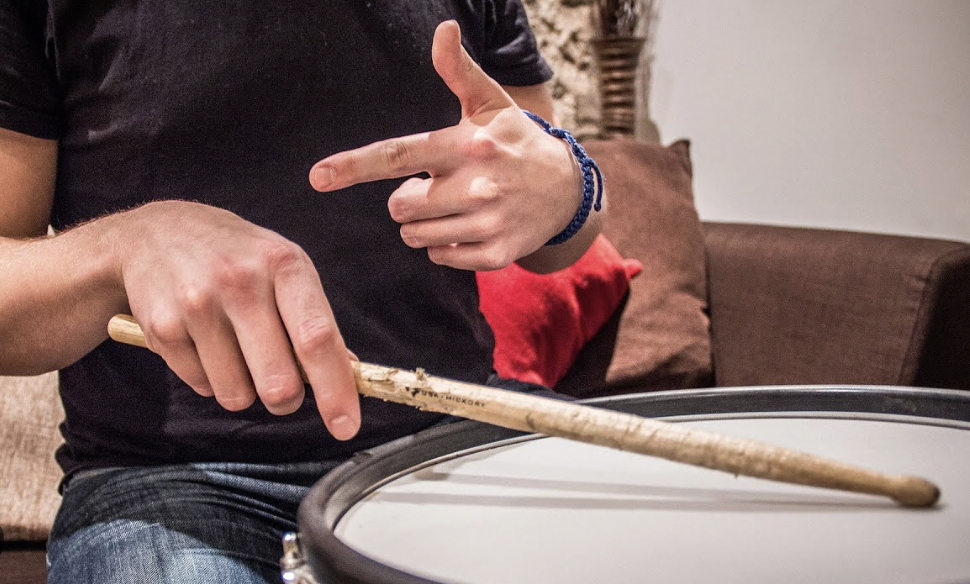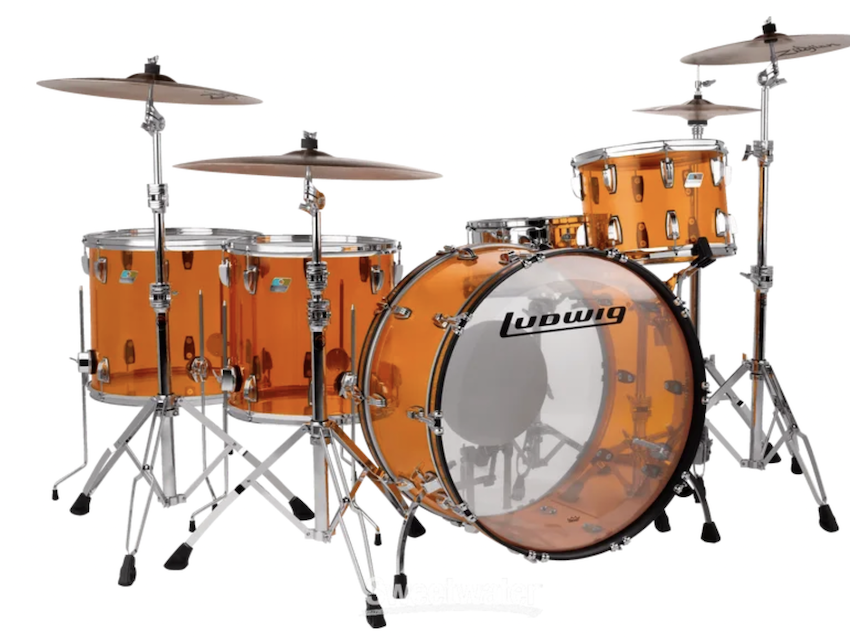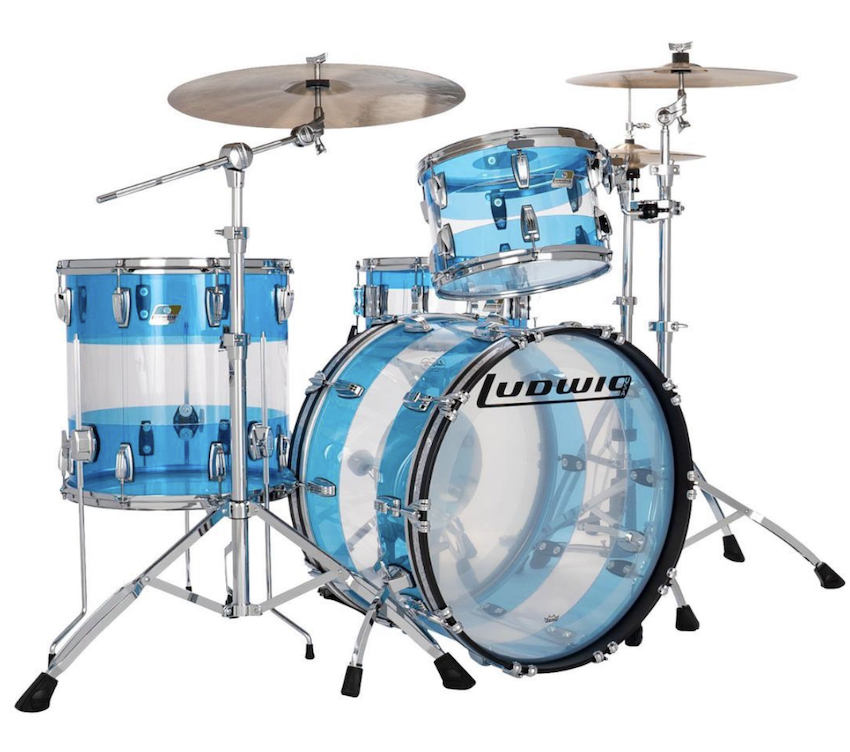How to Play Drums Faster - Hands
Table Of Contents
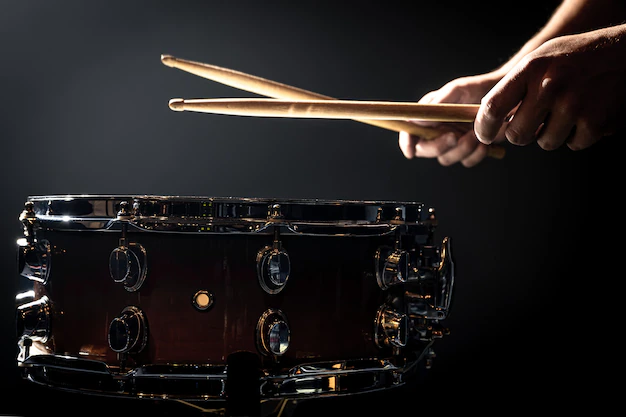
Overview
How to play drums faster? It’s a common question and asked by pretty much every drum student EVER!
Improving hand speed on the drums is a crucial aspect of becoming a proficient drummer, but let’s face it, it sounds and looks cool too.
Developing faster hands requires a combination of technique, strength, coordination and a boat load of dedicated practice. Below are some tips to help you enhance your hand speed on the drums.
Improving hand speed on the drums is a crucial aspect of becoming a proficient drummer, but let’s face it, it sounds and looks cool too.
Developing faster hands requires a combination of technique, strength, coordination and a boat load of dedicated practice. Below are some tips to help you enhance your hand speed on the drums.

How to Play Drums Faster - Hands
At a Glance:
- Use Proper Technique
- Get a Practice Pad
- Warm Up
- Develop Weak Hand
- Practice with a Metronome
- Use Good Stick Control
- Use Dynamics
- Incorporate Interval training
- Relax
- Record Your Progress
” There’s no trick, it’s just practice on the RIGHT THINGS. Stop looking for a short cut and DO THE WORK!”
Paul Lewis, Hidden Intent, Educator.
Developing Hand Speed - Getting Faster on Drums
The process of “How to play drums faster” is actually quite simple and pretty much the same for the hands as it is the feet.
SPOILER ALERT! There is NO quick fix or hack or trick that will get you there and EVERY fast drummer will tell you, they did it with hard work, dedication, a solid practice routine and the following tips.
SPOILER ALERT! There is NO quick fix or hack or trick that will get you there and EVERY fast drummer will tell you, they did it with hard work, dedication, a solid practice routine and the following tips.
1. Proper Technique:
I know I know, BORING!! But it really does all start here and this is the best “hack” you’ll ever get.
Ensuring that you are using the correct drumming technique is the way to speed this process up (pardon the pun).
Pay attention to your grip on the drumsticks, as a proper grip allows for greater control and speed.
You’ll use the matched or traditional grip, depending on your preference, and make sure your wrists and fingers are loose and flexible.
2. Warm-Up Routine: Like any exercise, you need to warm up to get the best results, so before diving into intense practice sessions, warm up your hands and wrists.
Play some simple rudiments, such as single strokes, double strokes, and paradiddles at a slow tempo.
Gradually increase the speed as your muscles become more responsive.
I know I know, BORING!! But it really does all start here and this is the best “hack” you’ll ever get.
Ensuring that you are using the correct drumming technique is the way to speed this process up (pardon the pun).
Pay attention to your grip on the drumsticks, as a proper grip allows for greater control and speed.
You’ll use the matched or traditional grip, depending on your preference, and make sure your wrists and fingers are loose and flexible.
2. Warm-Up Routine: Like any exercise, you need to warm up to get the best results, so before diving into intense practice sessions, warm up your hands and wrists.
Play some simple rudiments, such as single strokes, double strokes, and paradiddles at a slow tempo.
Gradually increase the speed as your muscles become more responsive.
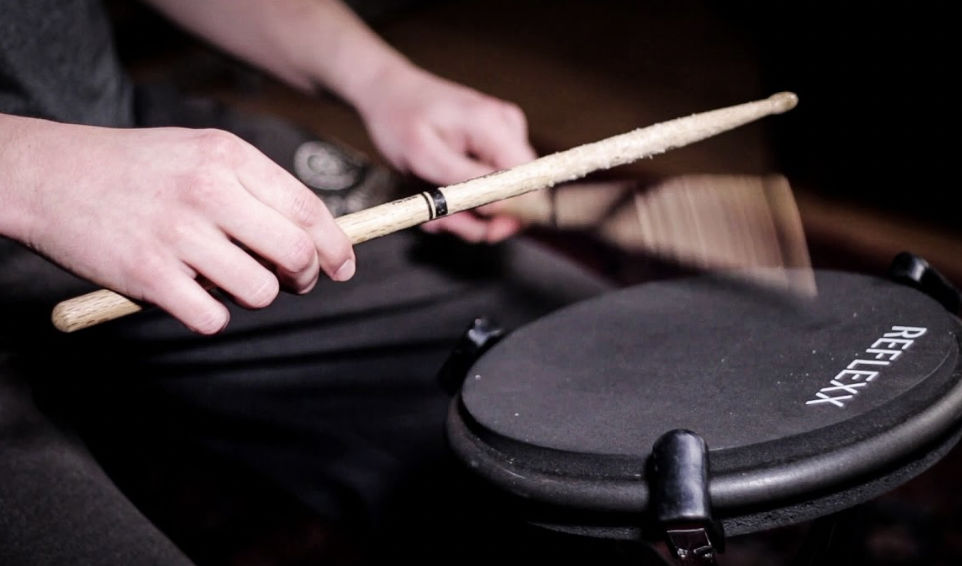
3. Practice with a Metronome:
Use a metronome consistently during your practice sessions.
I don’t know why more drummers don’t do this! You can get them free, it’s easy to do, it just requires a little discipline.
A metronome helps you develop a steady sense of timing and allows you to systematically increase the tempo.
You also see yourself get faster and the numbers increasing so you feel motivated that you’re getting somewhere, so guess what…..you’re more inclined to practice, GENIUS!
Start at a comfortable speed and gradually push yourself to higher tempos as your control and precision improve.
4. Isolate Weaknesses:
Identify specific areas of weakness in your playing and focus on them. The most obvious one here would be your non preferred or weak hand.
So if you struggle with a particular hand pattern (the paradiddle for example), isolate that pattern and practice it at a slow tempo.
As you gain control, incrementally increase the speed.
Use a metronome consistently during your practice sessions.
I don’t know why more drummers don’t do this! You can get them free, it’s easy to do, it just requires a little discipline.
A metronome helps you develop a steady sense of timing and allows you to systematically increase the tempo.
You also see yourself get faster and the numbers increasing so you feel motivated that you’re getting somewhere, so guess what…..you’re more inclined to practice, GENIUS!
Start at a comfortable speed and gradually push yourself to higher tempos as your control and precision improve.
4. Isolate Weaknesses:
Identify specific areas of weakness in your playing and focus on them. The most obvious one here would be your non preferred or weak hand.
So if you struggle with a particular hand pattern (the paradiddle for example), isolate that pattern and practice it at a slow tempo.
As you gain control, incrementally increase the speed.
Subscribe to our Newsletter
Stay connected and receive the latest gear updates as well as exclusive offers.
5. Stick Control Exercises:
Incorporate stick control exercises into your routine as these exercises help in building muscle memory and control.
The goal is to develop even and controlled strokes with both hands.
Gradually increase the difficulty of the exercises as you become more comfortable.
6. Use a Practice Pad:
Practising on a practice pad can help refine your technique without the added resistance and volume of drumheads.
This is another thing that I find hard to understand why more drummers don’t do, seems obvious and clear enough right?
Doing this allows you to focus on precision and speed without the distractions of the full drum set and you can do it almost anywhere and at any time, NO MORE EXCUSES.
Incorporate stick control exercises into your routine as these exercises help in building muscle memory and control.
The goal is to develop even and controlled strokes with both hands.
Gradually increase the difficulty of the exercises as you become more comfortable.
6. Use a Practice Pad:
Practising on a practice pad can help refine your technique without the added resistance and volume of drumheads.
This is another thing that I find hard to understand why more drummers don’t do, seems obvious and clear enough right?
Doing this allows you to focus on precision and speed without the distractions of the full drum set and you can do it almost anywhere and at any time, NO MORE EXCUSES.
7. Dynamic Drumming:
Work on your dynamic control. Being able to play softly and loudly with control is essential for achieving speed.
Practice accenting different strokes within a pattern to improve your dynamic range and control.
8. Interval Training:
Implement interval training in your practice routine. Play at a challenging tempo for a short duration, then take a brief break.
For example, play steady 8th note singles and then do a burst of 16ths, use a metronome for best results.
This method helps build endurance and prevents fatigue, enabling you to sustain faster speeds for longer periods.
9. Stay Relaxed:
Tension in your hands and arms can hinder speed and control so focus on staying relaxed while playing.
This is harder than is sounds but tension not only slows you down but can also lead to fatigue and injury.
Regularly check your posture and hand tension during practice.
10. Record and Analyse:
Record your practice sessions and listen back to identify areas that need improvement. You can just track your progress by writing current speeds as well.
Analysing your playing can provide valuable insights into your technique, timing, and hand speed.
Use this feedback to tailor your practice sessions effectively.
Work on your dynamic control. Being able to play softly and loudly with control is essential for achieving speed.
Practice accenting different strokes within a pattern to improve your dynamic range and control.
8. Interval Training:
Implement interval training in your practice routine. Play at a challenging tempo for a short duration, then take a brief break.
For example, play steady 8th note singles and then do a burst of 16ths, use a metronome for best results.
This method helps build endurance and prevents fatigue, enabling you to sustain faster speeds for longer periods.
9. Stay Relaxed:
Tension in your hands and arms can hinder speed and control so focus on staying relaxed while playing.
This is harder than is sounds but tension not only slows you down but can also lead to fatigue and injury.
Regularly check your posture and hand tension during practice.
10. Record and Analyse:
Record your practice sessions and listen back to identify areas that need improvement. You can just track your progress by writing current speeds as well.
Analysing your playing can provide valuable insights into your technique, timing, and hand speed.
Use this feedback to tailor your practice sessions effectively.
Summary
Ok lets sum this all up. Remember that progress takes time, and consistency is key, no tricks or hacks work sorry.
Regular, focused practice incorporating these tips will contribute to the development of faster hands on the drums.
Additionally, consider seeking guidance from a drum teacher or drummer who can provide personalised feedback and help you refine your technique, and look for someone who walks the walk and has fast hands with good technique.
Fast hands are 100% achievable you just need to commit to it and do the work, happy drumming!
Regular, focused practice incorporating these tips will contribute to the development of faster hands on the drums.
Additionally, consider seeking guidance from a drum teacher or drummer who can provide personalised feedback and help you refine your technique, and look for someone who walks the walk and has fast hands with good technique.
Fast hands are 100% achievable you just need to commit to it and do the work, happy drumming!
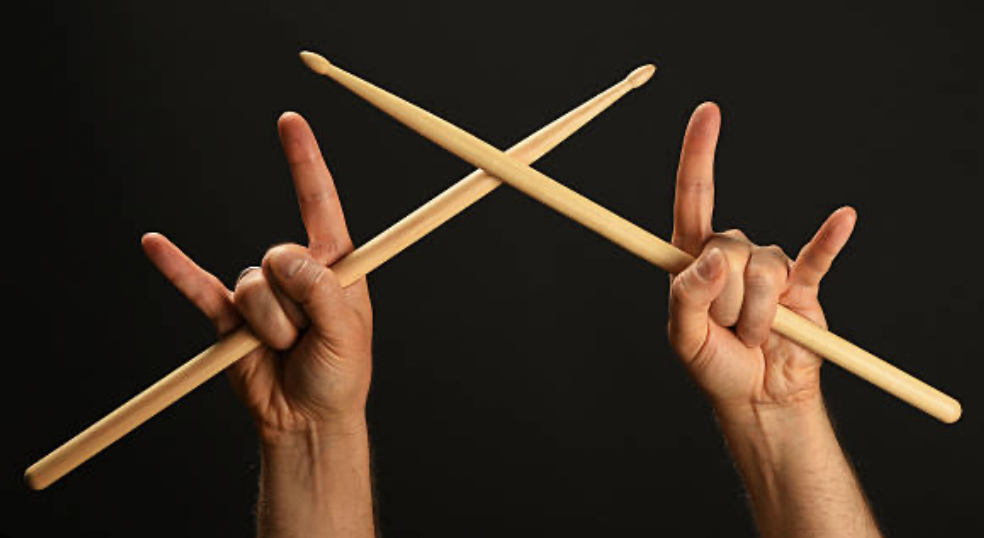
Q & A
Q. How do I get faster on the drums?
1. Use Proper Technique
2. Get a Practice Pad
3. Warm Up
4. Develop Weak Hand
5. Practice with a Metronome
6. Use Good Stick Control
7. Use Dynamics
8. Incorporate Interval training
9. Relax
10. Record Your Progress.
Q. How can I improve my drum kick speed?
The methods are very similar to the hands, some would even say they are identical. Therefore:
1. Use Proper Technique
2. Get a Practice Kick Pad
3. Warm Up
4. Develop Weak Foot
5. Practice with a Metronome
6. Use Good Foot Control
7. Use Dynamics
8. Incorporate Interval training
9. Relax
10. Record Your Progress.
Q. How can a drummer get better time?
1. Use a metronome
2. Playalong with songs
3. Play with other “tight” musicians
4. Play slowly, focusing on time and not being flashy
5. Use a metronome or backing track that pauses the click whist still keeping time. For example play-along to the click for 4 bars as normal, then have the click stop for 1 or 2 bars whilst you keep playing and then have click come back in and see if you were able to keep in time.
2. Get a Practice Pad
3. Warm Up
4. Develop Weak Hand
5. Practice with a Metronome
6. Use Good Stick Control
7. Use Dynamics
8. Incorporate Interval training
9. Relax
10. Record Your Progress.
Q. How can I improve my drum kick speed?
The methods are very similar to the hands, some would even say they are identical. Therefore:
1. Use Proper Technique
2. Get a Practice Kick Pad
3. Warm Up
4. Develop Weak Foot
5. Practice with a Metronome
6. Use Good Foot Control
7. Use Dynamics
8. Incorporate Interval training
9. Relax
10. Record Your Progress.
Q. How can a drummer get better time?
1. Use a metronome
2. Playalong with songs
3. Play with other “tight” musicians
4. Play slowly, focusing on time and not being flashy
5. Use a metronome or backing track that pauses the click whist still keeping time. For example play-along to the click for 4 bars as normal, then have the click stop for 1 or 2 bars whilst you keep playing and then have click come back in and see if you were able to keep in time.
Did We Miss Something?
If there is something we have forgotten to mention, please contact us so we can continue to help and serve the wider drumming community.

